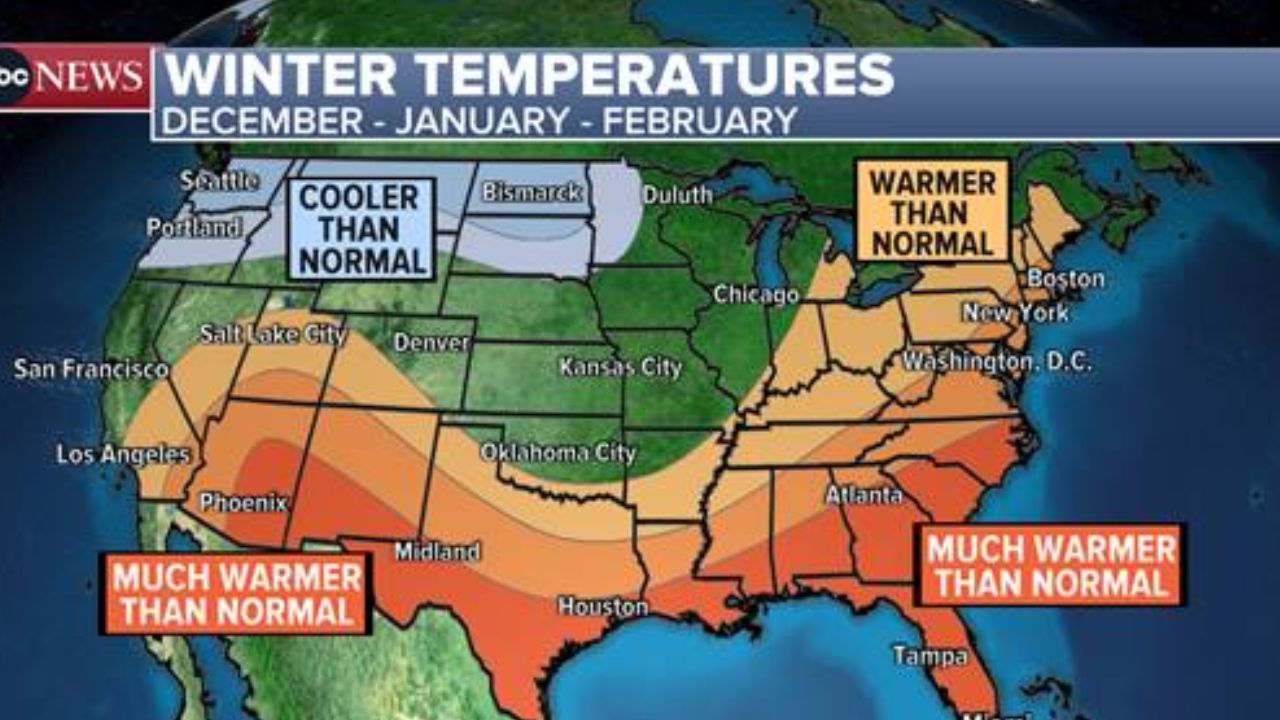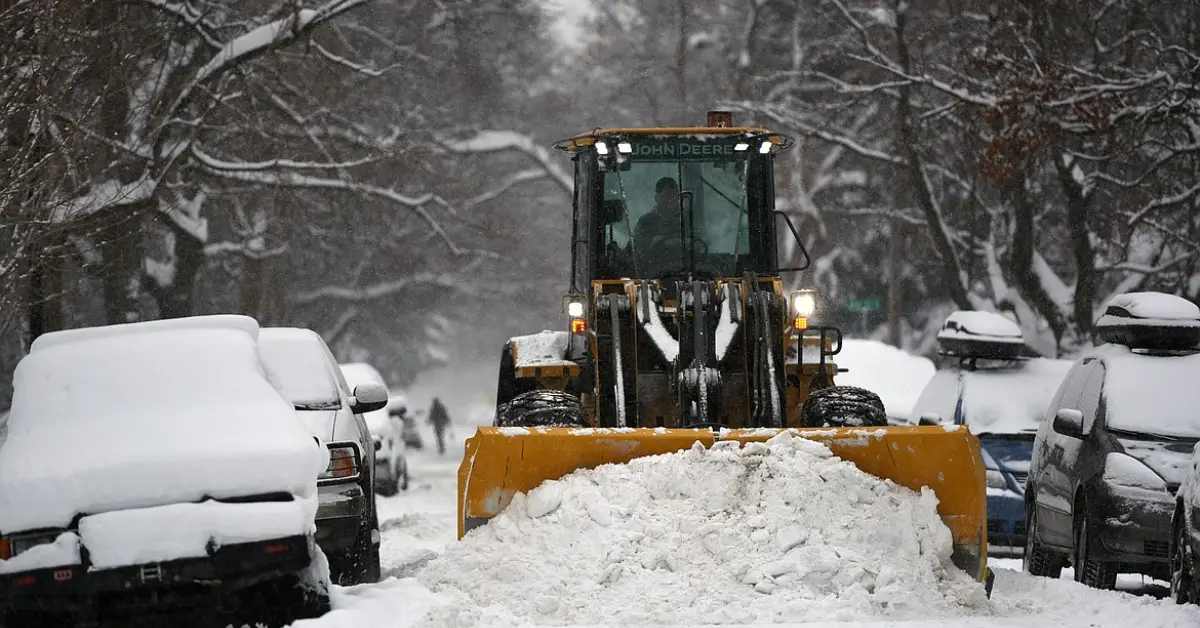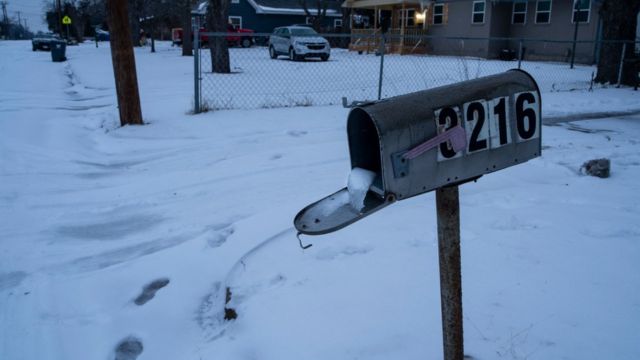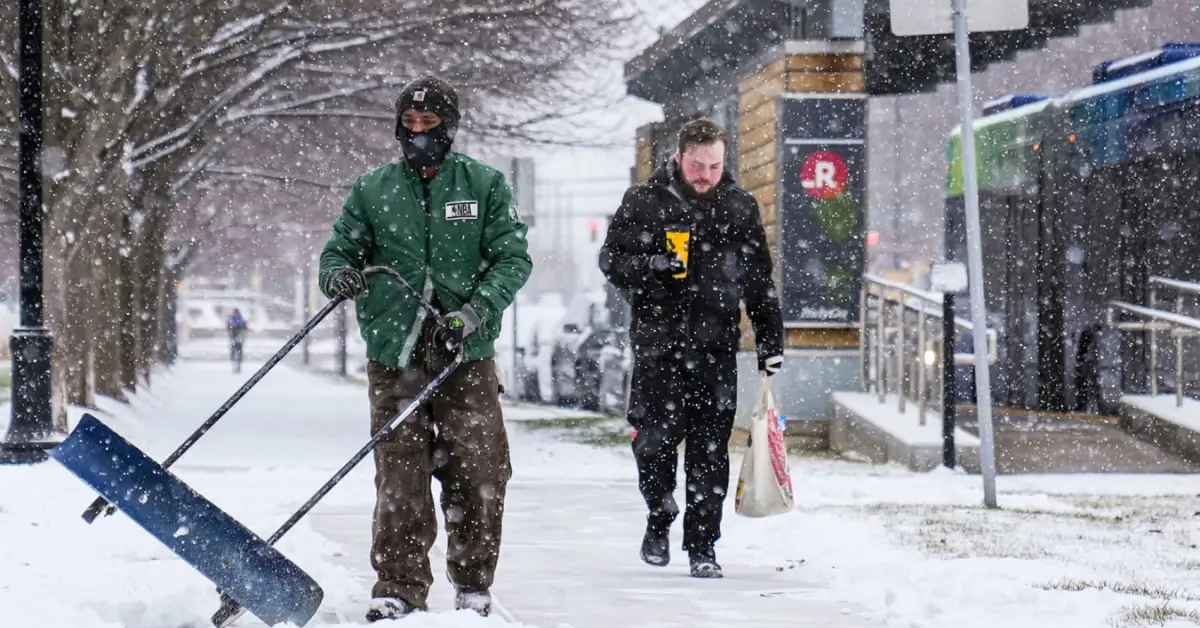Sacramento, CA — New long-range winter forecasts from the National Oceanic and Atmospheric Administration (NOAA) suggest that California could be in for a warmer and drier season than usual, even as the northern half of the United States braces for a bitter, storm-filled winter.
Released by the Climate Prediction Center on Thursday, the outlook covers December 2025 through February 2026 and paints a picture of sharp regional contrasts driven largely by an ongoing La Niña pattern.
A Divided Winter Across the U.S.
According to NOAA’s latest winter climate models, a broad swath of states stretching from Washington to Michigan is expected to see colder-than-normal temperatures, a signal that winter conditions in the northern tier may become more intense than average. These regions already trend colder than the rest of the country, but forecasters say this winter could bring deeper lows and more frequent Arctic outbreaks.
Meanwhile, much of the southern half of the nation — including the Southwest, Gulf Coast, Florida, and the mid-Atlantic — is favored to experience warmer-than-average temperatures. Of these, Florida and portions of the Desert Southwest carry the highest probability for an unusually warm winter season.
“La Niña typically strengthens temperature differences between northern and southern states, and this year’s outlook aligns closely with that expectation,” NOAA’s forecasters noted in the seasonal briefing.
The middle third of the country, including large portions of the central Plains and Midwest, sits in a zone of uncertainty. NOAA describes this area as having equal chances of colder or warmer, wetter or drier weather — meaning no strong signal is present for either outcome.
Wet North, Dry South
Precipitation trends also reflect the influence of La Niña. States in the Pacific Northwest, Great Lakes region and parts of the Ohio Valley are leaning toward a wetter-than-normal winter. Those conditions raise the odds of frequent rain and snow events from December onward.
In contrast, the Southwest, Deep South, and parts of the Southern Plains face a higher likelihood of below-normal precipitation, raising concerns about worsening drought.
NOAA warns that “drought conditions are likely to persist or intensify in portions of the Southwest, southern states, and even some parts of the Northeast.”
During La Niña winters, the southern United States often misses out on reliable storm systems. The newly issued outlook suggests that pattern may repeat, especially across Texas, Louisiana and areas extending toward the Southeast, where forecasters expect new drought development as the season progresses.
What California Can Expect
California once again finds itself on the tightrope between extremes. According to NOAA’s winter projection, the state carries a slight chance of above-normal temperatures statewide, while Central Coast and Southern California have an equal or higher likelihood of below-normal precipitation.
Read Also: Cold Thanksgiving Ahead: South Dakota Officials Warn of Frostbite Conditions
That combination—warmer and potentially drier—could limit Sierra snowfall, reduce reservoir recharge and increase pressure on long-term drought recovery efforts. Northern California’s outlook is less definitive, with forecasters indicating no strong signal for wetter or drier conditions.
Residents should not expect a repeat of the very wet winters experienced during recent El Niño-driven years, as this season’s La Niña influences storm tracks differently, often pushing Pacific systems northward and away from the state.
A Cold Thanksgiving Preview
Before winter officially begins, many states could feel an early blast of cold air. NOAA indicates that below-normal temperatures could begin as early as November 25, especially across the Midwest and Plains states.
Over the Thanksgiving holiday weekend, that cold air mass is expected to expand into Texas, the Gulf Coast, and the East Coast, bringing widespread freezes, sharp wind chills and even the potential for heavy snow across parts of the central and eastern United States.
National meteorologists say the pattern “favors a transition to more winter-like conditions across the Northwestern, Central, and Eastern U.S.”
Looking Ahead
While long-range forecasts can shift as atmospheric signals evolve, NOAA’s early winter outlook provides the clearest picture yet of what Californians should prepare for: a season leaning warm, possibly dry, and shaped heavily by the influence of La Niña. State and local agencies are expected to incorporate this information into drought planning, snowpack monitoring and fire-risk assessments heading into 2026.
For ongoing coverage of national weather trends and climate updates, visit mikeandjonpodcast.com.




